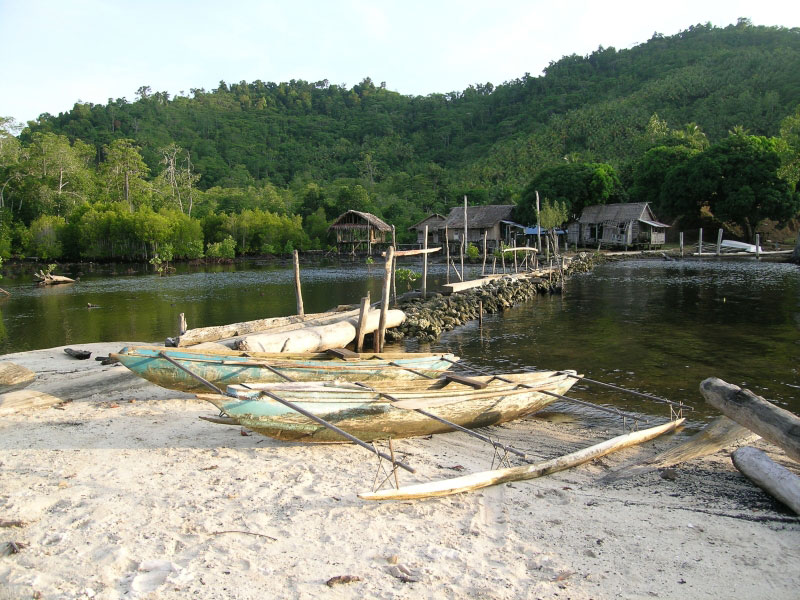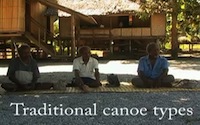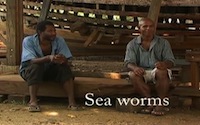
Saliba and Logea are two closely related dialects belonging to the Suauic group of the Papuan Tip
Cluster of the Western Oceanic language group (Ross 1988: 190ff, Lynch et al. 2003:882). They are
mutually intelligible and the main differences seem to be lexical and phonological. There has been
virtually no linguistic documentation of the Logea dialect and only little on Saliba, or indeed on
the Suauic family as a whole.
English is the lingua franca of Milne Bay Province (rather than Tok Pisin as in most other parts of
Papua New Guinea) and its influence is strong in all areas of daily life. English is perceived as
more prestigious and is associated with better job prospects and a higher standard of living. Beyond
the immediate home setting, Salilba-Logea is under great threat. The Saliba and Logea people are
continuing to lead a traditional life of fishing and subsistence farming. At this point it is still
possible to work with the last generation of old speakers who have essentially no knowledge of
English, as well as with children who are growing up as monolingual speakers of Saliba or Logea, at
least in the first few years of their life.

Typological profile
The languages of the Papuan Tip Cluster are of special typological interest as they show features not found elsewhere in Oceanic languages and which are generally considered to be the result of early contact with Papuan languages, i.e. non-Austronesian languages native to New Guinea. One such feature is that Saliba-Logea, as most languages of the Papuan Tip Cluster, has a basic constituent order of object-verb (OV) and related word-order features are genitive-noun ordering and postpositions. This contrasts with the rest of the Oceanic language group, as well as Austronesian languages in general, which generally have verb-object (VO) ordering.
The language follows a nominative-accusative pattern and is almost exclusively head-marking. There are pronominal subject prefixes and object suffixes on the verb and extensive omission of NPs. The exception to the head-marking pattern is that there are pronominal suffixes on nominal modifiers (identical to possessive suffixes) which indicate the number distinction of the head noun. Within the Oceanic language group this feature seems to be restricted to the Western Melanesian languages (Lynch et al. 2003: 40) and in Saliba-Logea it has given rise to an unusual extension in the distribution of the plural suffix.
Of typological interest is the occurrence of morphologically intransitive verbs with lexical object NPs and intransitive verbs which can incorporate a semantic patient object. Also of interest is the suppletive paradigm of the verb ‘give’ which is typologically unique in combining transitive and ditransitive stems as suppletion partners in the same paradigm.
There are a number of complex verbal constructions in Saliba-Logea such as nuclear-layer serialisation with four distinct positional slots, as well as core-layer serialisation. In addition, the language shows the unusual feature of not one but two positions for incorporated nouns within the verb, one preceding the verb stem and one following it. Furthermore, there are instances where postpositional phrases are claimed by two different VPs and seem to be simultaneously assigned two semantic roles. These constructions possibly constitute core-layer serialisation or clause chaining.
The language has a complex system of demonstratives and place adverbs showing a three-way deictic distinction across five form classes (free demonstratives, demonstrative clitics, clause-final demonstratives, particles and place adverbs). There also is constant reference in the language to spatial location or movement both on a local scale (towards the sea vs. towards the hill) and on a geographic scale (roughly: east vs. west).
Project related publications
Cleary-Kemp, Jessica. 2006. Givenness, definiteness, and specificity in a language without articles: The use of NP markers in Saliba, an Oceanic language of Papua New Guinea. Honours thesis, Monash University.
Dawuda, Carmen. 2009. Demonstratives and place adverbs with exophoric reference in Logea. PhD thesis, Monash University.
Hajek, John. 2008. A sketch phonology of Saliba-Logea. Manuscript.
https://hdl.handle.net/1839/00-0000-0000-000A-2435-F
Hajek, John. 2008. On the orthography of Saliba-Logea. Manuscript.
https://hdl.handle.net/1839/00-0000-0000-000A-2434-5
Kelwau, Millar and Carmen Dawuda (eds.). 2008. Hanayawe kalinadi ena, bolimai kesega ganakalona ne unai meta waikena badodi saudoudoi labui [Logea calendar].
Margetts, Andrew. 2009. Using Toolbox with media files: a practical guide. Language Documentation and Conservation. 3(1), 51-86
Margetts, Andrew. Transcriber to Toolbox converter: http://linguisticsoftwareconverters.zong.mine.nu/
Margetts, Anna. 2018. Exophoric demonstratives in Saliba. Demonstratives in cross-linguistic perspective, Stephen C. Levinson, Sarah Cutfield, Michael Dunn, N. J. Enfield, Sérgio Meira (eds.). Cambridge: Cambridge University Press (Culture & Cognition Series).
Thieberger, Nicholas, Anna Margetts, Stephen Morey, Simon Musgrave. 2016. Assessing annotated corpora as research output. Australian Journal of Linguistics. 36(1): 1-21. doi:10.1080/07268602.2016.1109428
Margetts, Anna. 2015. Person shift at narrative peak. Language 91/4, 755-805
Margetts, Anna and Andrew Margetts 2015. Audio and video recording techniques for linguistic research. The Oxford Handbook of Linguistic Fieldwork. Nick Thieberger (ed.). Oxford: Oxford University Press. 13-53
Margetts, Anna. 2011. Filming with native speaker commentary. Documenting Endangered Languages. Geoffrey Haig, Nicole Nau, Stefan Schnell, Claudia Wegener (eds.). Mouton de Gruyter: Berlin, New York, and Amsterdam. 321-338
Margetts, Anna. 2011. Incorporation in Saliba. Morphosyntactic aspects of Oceanic languages. C. Moyse-Fourie, Joachim Sabel (eds.). (Mouton de Gruyter, trends in linguistics).
Margetts, Anna. 2009. Discovering history through language: papers in honour of Malcolm Ross. Bethwyn Evans (ed.). Canberra: Pacific Linguistics. 413-429
Margetts, Anna. 2009. Data processing and its impact on linguistic analysis. Language Documentation and Conservation, 3/1.
Margetts, Anna. 2008a. Learning verbs without boots and straps? The problem of ‘give’ in Saliba.
Cross-linguistic perspectives on argument structure: implications for learnability, M. Bowerman and P. Brown (eds.). Erlbaum: New Jersey. 111-137
Margetts, Anna. 2008b. Transitivity discord in some Oceanic languages. Oceanic Linguistics 47/1. 31-44
Margetts, Anna. 2007a. Close and remote objects in a language with a single transitive suffix. Language Description, History and Development: Linguistic Indulgence in Memory of Terry Crowley. J. Siegel, J. Lynch, D. Eades (eds.). John Benjamins: Amsterdam and Philadelphia. 69-78
Margetts, Anna. 2007b. Four Languages from the Lower End of the Typology of Locative Predication (with Michael Dunn, Sergio Meira, and Angela Terrill). Linguistics 45-5/6. 873-892.
Margetts, Anna. 2007c. Three-participant events in Oceanic. Oceanic Linguistics. 46/1. 71 -127.
Margetts, Anna. 2005. Positional slots in Saliba complex verbs. Oceanic Linguistics 44/1. 65-89.
Margetts, Anna. 2004a. Saliba Demonstratives in situational use: a first account. Deixis and Demonstratives in Oceanic languages, G. Senft (ed.). Pacific Linguistics: Canberra. 37-56
Margetts, Anna. 2004b. Core-layer juncture in Saliba. Complex predicates and serialization in Oceanic languages, I. Brill, F. Ozanne-Rivierre, (eds.). Mouton de Gruyter: Berlin, New York, and Amsterdam. 69-89
Margetts, Anna. 2004c. From implicature to construction: grammaticalization from possession to benefaction in Oceanic languages. Oceanic Linguistics 43/2. 445-468
Schmidt, Thorsten. 2007. The LingTool application: an interface for the production of interlinear morphemic glosses in XML. Honours thesis, Monash University.
Further publications on Saliba-Logea
Margetts, Anna. 1999a. Valence and transitivity in Saliba, an Oceanic language of Papua New Guinea. MPI Series in Psycholinguistics. Nijmegen: Max Planck Institute for Psycholinguistics.
Margetts, Anna. 1999b. Negation in Saliba. Negation in Oceanic languages: Typological studies. Ulrike Mosel and Even Hovdhaugen, (eds.). München and Newcastle, LINCOM Europa. (Studies in Austronesian Linguistics, 2)
Margetts, Anna. 2002. The linguistic encoding of three-participant events in Saliba. Studies in Language. 26:3, 613-636.
Mosel, Ulrike. 1994. Saliba. Languages of the World/Materials 31. München/Newcastle: LINCOM Europa.
Oetzel, Rainer and Sabine Oetzel. 1998. Orthography and phonology description of Saliba. Ukarumpa, Papua New Guinea, Summer Institute of Linguistics.
Other references cited above
Lynch, John, Malcolm Ross, and Terry Crowley. 2003. The Oceanic languages. London, Curzon Press.
Ross, M. 1988. Proto Oceanic and the Austronesian languages of Western Melanesia. Pacific Linguistics C-98.








